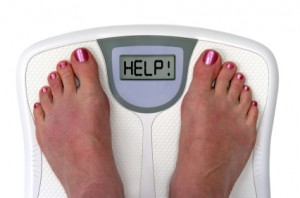 A person needs to browse through any health related journal, magazine or website to find new and novel ways to reduce weight. While the options range from bariatric surgery to good old “eat-less-exercise-more” concepts, it is intriguing how the more weight a person gains, the harder it is to shed the extra calories. Losing weight is an uphill battle for majority of us. And that got me thinking about how much our biology cooperates while we try to lose weight. I came across these two elegant studies that explain why this is indeed an uphill battle.
A person needs to browse through any health related journal, magazine or website to find new and novel ways to reduce weight. While the options range from bariatric surgery to good old “eat-less-exercise-more” concepts, it is intriguing how the more weight a person gains, the harder it is to shed the extra calories. Losing weight is an uphill battle for majority of us. And that got me thinking about how much our biology cooperates while we try to lose weight. I came across these two elegant studies that explain why this is indeed an uphill battle.
Eating makes us feel good- biologically speaking – eating activates the feel-good dopaminergic “reward” pathway in dorsal striatum. Also, following feeding, a member of a family of appetite-regulating fatty acid amides messenger molecule oleoythanolamine (OEA), or a satiety factor, is transmitted from the gut via the vagus nerve to the brain signaling to stop eating. Therefore, restricted eating or controlled eating is achieved by actions of dopaminergic surge and OEA levels in the brain.
Interestingly, these checks and balances were found to not operate well in obese humans and animals on high-fat diet. Obese humans show a dopamine receptor deficiency in the dorsal striatum and do not show an elevated response to food stimuli, giving rise to the concept that overeating may represent a compensatory behavioral response to diminished responses within brain reward dopaminergic circuits. In a related study, lentivirus-mediated knockdown of dorsal striatum dopamine receptors was found to be sufficient to induce compulsive-like caloric intake in rats. Similarly, high fat diet causes dopamine deficiency and a decrease in level of satiety messenger OEA levels. A recent study (1) tested the hypothesis that high-fat-induced gastrointestinal OEA deficiency is physiologically linked to high-fat-induced dopamine deficiency. In an elegant set of experiments, researchers compared striatal dopamine and OEA levels in mice on low fat and high fat diet. Interestingly, when mice were fed via gut catheters, bypassing the taste receptors in the mouth, there was a similar surge in dopamine signaling with normal diet and a decreased dopamine response with high-fat diet. This showed that the inducer was present in the gut and did not involve the oral cavity. Also, when the OEA molecule was introduced into the animal’s gut, there was an expected surge in dopamine in high fat diet animals.
Therefore, when we consume a high fat diet, two responses go awry: First, synthesis of OEA is decreased leading to decreased or delayed transmission to the brain to stop eating; second, the decreased dopamine response leads to decreased satisfaction or fullness, and this leads to a vicious cycle of overeating and weight gain.
The second paper (2) looked at role of plasma concentrations of ghrelin, also called the hunger molecule, in obesity. Ghrelin administration has been shown to stimulate food intake more efficiently in obese than in lean humans, indicating that ghrelin exerts a more powerful activation of appetite circuitries in obese individuals. Ghrelin hormone exists in plasma in both IgG-antibody (naturally occurring) bound and unbound forms. It is thought that circulating IgG act as carriers of the hormone, and the bound form is thus protected from degradation. In contrast to “free” ghrelin levels measured in native plasma, found to be similar between obese and controls in this study, the authors detected increased cumulative ghrelin concentrations in obese patients, suggesting that in the obese there is more IgG-bound ghrelin than in other groups and which was not detectable in whole plasma before IgG extraction. Obese patients had increased affinity of their IgG for ghrelin, which may also underlie their ability to more efficiently bind and transport ghrelin as compared with IgG from controls and anoeroxic patients. These data reveal that in both obese humans and mice, IgG with increased affinity for ghrelin enhances ghrelin’s orexigenic effect, which may contribute to increased appetite and overeating.
With high-fat diet rendering the brain oblivious to gut calorie intake and ghrelin’s hyperactivation of appetite circuits in obese individuals, our biology is indeed making it harder to eat less. And weight loss tricks are not going away any time soon.
References
- Tellez, L.A. et al. (2013) A gut lipid messenger links excess dietary fat to dopamine deficiency. Science 341,800-02.
- Takagi, K. et al. (2013) Anti-ghrelin immunoglobulins modulate ghrelin stability and its orexigenic effect in obese mice and humans. Nat Commun. 4,2685.
Anupama Gopalakrishnan
Latest posts by Anupama Gopalakrishnan (see all)
- Mitochondrial DNA Typing in Forensics - February 25, 2015
- PowerQuant System: Tool for informed casework sample processing decisions - July 21, 2014
- Biology of Overeating and the Weight-Gain Cycle - April 28, 2014
